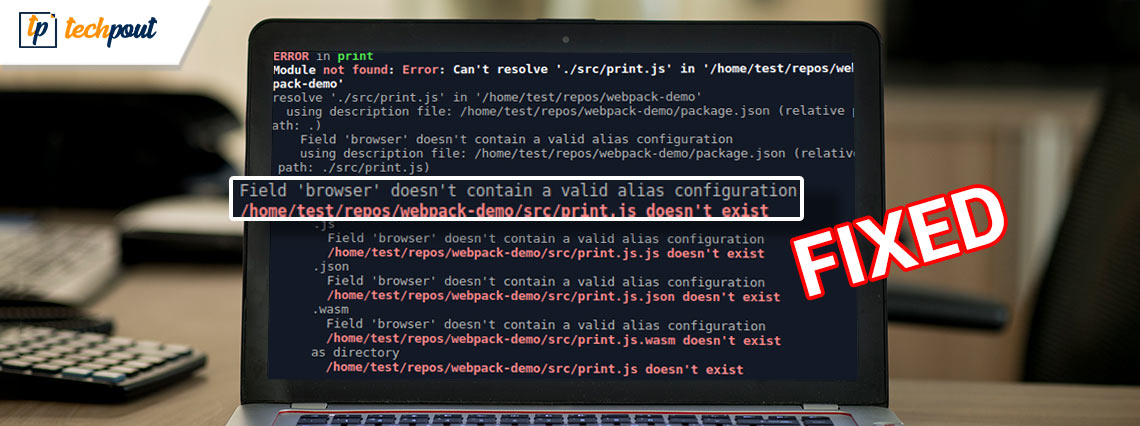Field Browser Doesn’T Contain A Valid Alias Configuration
Field Browser is a powerful tool that allows users to navigate and explore the contents of a database or data warehouse. It provides a user-friendly interface that enables users to browse through different fields and tables, view data, and apply various filters and transformations.
The Importance of a Valid Alias Configuration in the Field Browser
A valid alias configuration is essential for the proper functioning of the Field Browser. An alias is a shorthand reference to a table or field in a database. It allows users to easily access and manipulate data without having to remember complex table and field names.
Without a valid alias configuration, the Field Browser may not be able to recognize and access the tables and fields in the underlying database. This can result in errors and issues that prevent users from effectively using the tool.
Common Issues with Alias Configuration in the Field Browser
There are several common issues that can occur with the alias configuration in the Field Browser. Some of these include:
1. Incorrectly formatted alias definitions: The syntax of the alias configuration file may be incorrect, leading to parsing errors and issues with recognizing the aliases.
2. Missing or mistyped alias values: The values assigned to the aliases may be missing or mistyped, causing the Field Browser to be unable to match the aliases with the corresponding tables and fields.
3. Unauthorized access to the alias configuration file: If the alias configuration file is not properly secured, unauthorized users may modify or delete the aliases, resulting in errors and inconsistencies in the Field Browser.
4. Changes in the underlying database structure without updating the alias configuration: If the structure of the database is modified without updating the alias configuration, the Field Browser may not be able to correctly map the aliases to the new tables and fields.
Symptoms of Field Browser not containing a Valid Alias Configuration
When the Field Browser does not contain a valid alias configuration, users may experience the following symptoms:
1. Error messages such as “Module not found: Error can’t resolve src in” or “Can’t resolve ‘fs'” when trying to access or navigate through the Field Browser.
2. The inability to view or access specific tables or fields in the database.
3. Incorrect or inconsistent data retrieval from the database when using the Field Browser.
Troubleshooting Steps for Fixing a Field Browser with an Invalid Alias Configuration
To fix a Field Browser that does not contain a valid alias configuration, follow these troubleshooting steps:
1. Checking the alias configuration file for errors: Review the alias configuration file and ensure that there are no syntax errors or missing definitions.
2. Verifying the alias configuration syntax: Confirm that the alias configuration follows the correct syntax and format specified for the Field Browser.
3. Updating the alias configuration with correct values: Double-check the values assigned to the aliases and make sure they match the corresponding tables and fields in the database.
4. Testing the Field Browser after making changes to the alias configuration: After making any changes to the alias configuration, test the Field Browser to ensure that it is now functioning correctly and able to access the desired tables and fields.
Potential Causes of an Invalid Alias Configuration in the Field Browser
There are several potential causes for an invalid alias configuration in the Field Browser. Some of these include:
1. Incorrectly formatted alias definitions: This can occur if the syntax and format of the alias configuration file are not followed correctly.
2. Missing or mistyped alias values: If the values assigned to the aliases are missing or incorrect, the Field Browser will not be able to match them with the corresponding tables and fields.
3. Unauthorized access to the alias configuration file: If unauthorized users have access to the alias configuration file, they may modify or delete the aliases, leading to an invalid configuration.
4. Changes in the underlying database structure without updating the alias configuration: If the structure of the database is modified without updating the alias configuration, the Field Browser will not be able to correctly map the aliases to the new tables and fields.
Prevention and Best Practices for Maintaining a Valid Alias Configuration in the Field Browser
To prevent and maintain a valid alias configuration in the Field Browser, consider the following best practices:
1. Regularly review and update the alias configuration file to ensure that it reflects any changes in the underlying database structure.
2. Store the alias configuration file in a secure location with restricted access to prevent unauthorized modifications.
3. Use consistent naming conventions for aliases, tables, and fields to avoid confusion and errors in the configuration.
4. Test the Field Browser after any changes to the alias configuration to verify that it is functioning correctly.
In conclusion, a valid alias configuration is critical for the Field Browser to properly access and manipulate data in a database. By following the troubleshooting steps and best practices outlined in this article, users can ensure a smooth and efficient experience with the Field Browser.
FAQs:
Q: What is an alias configuration in the Field Browser?
A: An alias configuration is a file that maps shorthand aliases to specific tables and fields in a database. It allows users to access and manipulate data without having to use complex table and field names.
Q: What are the symptoms of a Field Browser not containing a valid alias configuration?
A: Symptoms can include error messages such as “Module not found: Error can’t resolve src in” or “Can’t resolve ‘fs’,” the inability to view or access specific tables or fields, and incorrect or inconsistent data retrieval.
Q: How can I fix a Field Browser with an invalid alias configuration?
A: Troubleshooting steps include checking the alias configuration file for errors, verifying the syntax, updating alias values, and testing the Field Browser after making changes.
Q: What causes an invalid alias configuration in the Field Browser?
A: Causes can include incorrectly formatted alias definitions, missing or mistyped alias values, unauthorized access to the alias configuration file, and changes in the database structure without updating the alias configuration.
Q: How can I prevent and maintain a valid alias configuration in the Field Browser?
A: Best practices include regularly reviewing and updating the alias configuration file, storing it securely, using consistent naming conventions, and testing the Field Browser after any changes.
Storybook – Can’T Resolve ‘Generated-Stories-Entry.Cjs’ / Field ‘Browser’ Doesn’T Contain A Valid…
Keywords searched by users: field browser doesn’t contain a valid alias configuration Module not found: Error can t resolve src in, Webpack alias, Webpack config ts, Support for the experimental syntax ‘jsx isn t currently enabled, Can t resolve ‘fs, Webpack –config, Webpack-dev-server inline progress config build webpack-dev conf js, Webpack config JS react
Categories: Top 80 Field Browser Doesn’T Contain A Valid Alias Configuration
See more here: nhanvietluanvan.com
Module Not Found: Error Can T Resolve Src In
One of the common challenges encountered by developers, especially those new to programming, is the infamous “Module not found: Error can’t resolve ‘src'” error. This error message can be quite daunting for beginners, as it can be both confusing and discouraging. However, fear not! In this article, we will delve into the details of this error, explore its possible causes, and provide some practical solutions to overcome it.
What is the ‘Module not found: Error can’t resolve ‘src” error?
When you encounter the “Module not found: Error can’t resolve ‘src'” error, it typically indicates that the module or file you are trying to import or reference in your code cannot be found or resolved. In most cases, this error arises while setting up or running a JavaScript or TypeScript project.
Possible Causes of the Error:
1. Incorrect file path: One of the most common causes of this error is an incorrect file path. Ensure that you have provided the correct relative path to the module or file you are trying to import. Double-check the spelling, capitalization, and ensure that the file is located in the designated folder.
2. Missing or misplaced files: Another cause of this error could be missing or misplaced files. If you have recently moved or deleted a file used by your project, the error may occur. Make sure that all the required files are present and correctly located.
3. Wrong module name: It is crucial to ensure that the module or file name you are trying to import matches the actual name. Even a small typographical error in the module name specified in the import statement can lead to this error. Review your import statements carefully and verify that the module names are accurate.
4. Dependencies not installed: If your project relies on external libraries or modules, it is essential to ensure that they are properly installed. Failure to install dependencies can result in the “Module not found” error.
Solutions to Resolve the Error:
1. Verify the file path: Carefully review the file path specified in your import statement. Ensure that the path corresponds to the correct location of the module or file you intend to import.
2. Check for missing or misplaced files: If you suspect that a file is missing or misplaced, verify its presence and location. If necessary, restore the missing file or move it back to its original location.
3. Validate module names: Double-check the names of the modules or files you are trying to import. Ensure that they match the specified import statements exactly. Rectify any typographical errors in the import statements.
4. Install missing dependencies: If the error is occurring due to missing dependencies, use package managers such as npm or Yarn to install the required modules. Make sure to update your package.json file with the correct dependency versions.
5. Restart development server: Sometimes, simply restarting your development server or IDE can resolve the “Module not found” error. This action helps refresh the project environment and may eliminate any temporary glitches causing the issue.
FAQs:
Q1. I have triple-checked my file path, but the error persists. What should I do?
A1: In such cases, it might be worthwhile to consider if your project’s build configuration or bundler settings are causing the issue. Review your build tools, such as webpack or Parcel, to ensure they are correctly configured to handle your project’s file structure.
Q2. I’m using a package or framework like React, and the error occurs even when I attempt to import its own components. What could be wrong?
A2: This problem can arise when the module resolution algorithm for your build tool is not correctly configured. Verify that your project setup has the necessary configurations and that the specific package is installed correctly.
Q3. I recently updated my project dependencies, and this error started appearing. Any suggestions?
A3: Dependency updates can sometimes introduce breaking changes. Make sure to review the update notes and check if any changes are required in your import statements or project setup to accommodate the new versions.
In conclusion, encountering the “Module not found” error can be frustrating, but with a systematic approach, it can be resolved. By identifying potential causes like incorrect file paths, missing files, or wrong module names, you can troubleshoot and apply appropriate solutions to resolve the error. Always double-check your import statements and ensure that dependencies are correctly installed. With persistence and attention to detail, you will be able to overcome this error and continue building your applications seamlessly.
Webpack Alias
Introduction:
In modern web development, optimizing the build process and improving the overall performance of our projects is of utmost importance. One tool that has gained significant popularity in recent years is Webpack. Webpack is a powerful module bundler that allows developers to bundle their JavaScript, CSS, and other assets into a single optimized package. One notable feature of Webpack is the ability to configure aliases, which simplify the process of importing modules in our projects. In this article, we will explore Webpack aliases in detail, their benefits, and how to effectively use them in our web development workflow.
Understanding Webpack Alias:
Webpack aliases allow developers to map a certain path to another path. This means that instead of having to write long and complicated import statements for our modules, we can define aliases that provide simple and easy-to-read paths.
For example, let’s say we have a project with a deep folder structure, and we frequently import files from multiple directories. Without aliases, our import statements could look like this:
import { someModule } from ‘../../../shared/modules/someModule’;
With aliases, we can simplify this to:
import { someModule } from ‘@shared/someModule’;
This not only makes our code more readable but also makes it easier to maintain.
Configuring Webpack Aliases:
To configure aliases in a Webpack project, we need to specify them in the webpack.config.js file. Within the `resolve` object, we can define our aliases using the `alias` property. Here’s an example of how to set up aliases for our project:
“`javascript
module.exports = {
// …
resolve: {
alias: {
‘@shared’: path.resolve(__dirname, ‘src/shared’),
‘@components’: path.resolve(__dirname, ‘src/components’),
}
},
// …
};
“`
In the above example, we have defined two aliases: `@shared` and `@components`. We map `@shared` to the `src/shared` directory, and `@components` to the `src/components` directory. Now we can import modules from these directories using the respective aliases.
Benefits of Using Webpack Aliases:
1. Improved Readability: Aliases provide a cleaner and more descriptive way to import modules. By using simple aliases like `@shared` or `@components`, it becomes easier to understand the purpose of the imported module.
2. Code Maintainability: Aliases significantly improve the maintainability of our codebase. If we decide to reorganize our project’s folder structure, we only need to update the alias configuration in the Webpack config file, instead of having to manually update all import statements throughout the codebase.
3. Enforced Consistency: With aliases, project-wide conventions can be established, ensuring consistency across the entire codebase. Developers will import modules using the defined aliases, eliminating any confusion caused by inconsistent import paths.
Frequently Asked Questions:
Q1. Can aliases be used for absolute paths outside the project directory?
No, Webpack aliases are relative to the project directory. They cannot be used for absolute paths outside the project.
Q2. How do aliases affect code splitting in Webpack?
Aliases do not directly affect code splitting in Webpack. Code splitting is a technique that allows us to split our code into smaller chunks, which are loaded on-demand. Aliases are used for importing modules within your project, and they do not impact how the code is split.
Q3. Can aliases be defined for CSS imports?
Yes, aliases can be defined for CSS imports as well. Webpack handles CSS imports similarly to JavaScript imports, allowing us to specify aliases for CSS files and stylesheets.
Q4. Can aliases be used with TypeScript?
Yes, aliases can be used with TypeScript projects. However, to enable aliases with TypeScript, additional configuration steps are required. We need to set up paths in the `tsconfig.json` file to map the aliases to their corresponding paths.
Conclusion:
Webpack aliases are a powerful tool that simplifies the process of importing modules in our projects. They enhance readability, maintainability, and enforce consistency, providing significant benefits to developers. By configuring aliases in the Webpack config file, we can establish a clean and intuitive way to import modules, while also future-proofing our projects against potential folder structure changes. Whether working on a small or large-scale project, utilizing Webpack aliases can have a positive impact on the overall development workflow and codebase organization.
Images related to the topic field browser doesn’t contain a valid alias configuration

Found 47 images related to field browser doesn’t contain a valid alias configuration theme

![Bug] Field 'browser' doesn't contain a valid alias configuration · Issue #18993 · microsoft/TypeScript · GitHub Bug] Field 'Browser' Doesn'T Contain A Valid Alias Configuration · Issue #18993 · Microsoft/Typescript · Github](https://user-images.githubusercontent.com/9698639/31213518-aa320ee8-a96c-11e7-8c7b-b3e7c2c7174e.png)




































Article link: field browser doesn’t contain a valid alias configuration.
Learn more about the topic field browser doesn’t contain a valid alias configuration.
- Field ‘browser’ doesn’t contain a valid alias configuration
- Fix: Field ‘browser’ doesn’t contain a valid alias configuration
- Fix Field Browser Doesn’t Contain a Valid Alias Configuration
- Fix: Field ‘Browser’ Doesn’t Contain a … – MiniTool Software
- Fix: Field Browser Doesn’t Contain a Valid Alias Configuration
- 6 Easy Fixes For Field ‘Browser’ Doesn’t Contain a Valid Alias …
- Field browser doesn’t contain a valid alias configuration
- [Fixed] Field “browser” doesn’t contain a valid alias configuration
- Field ‘browser’ doesn’t contain a valid alias configuration #2095
- Field browser doesn’t contain a valid alias configuration: 5 Fixes
See more: nhanvietluanvan.com/luat-hoc